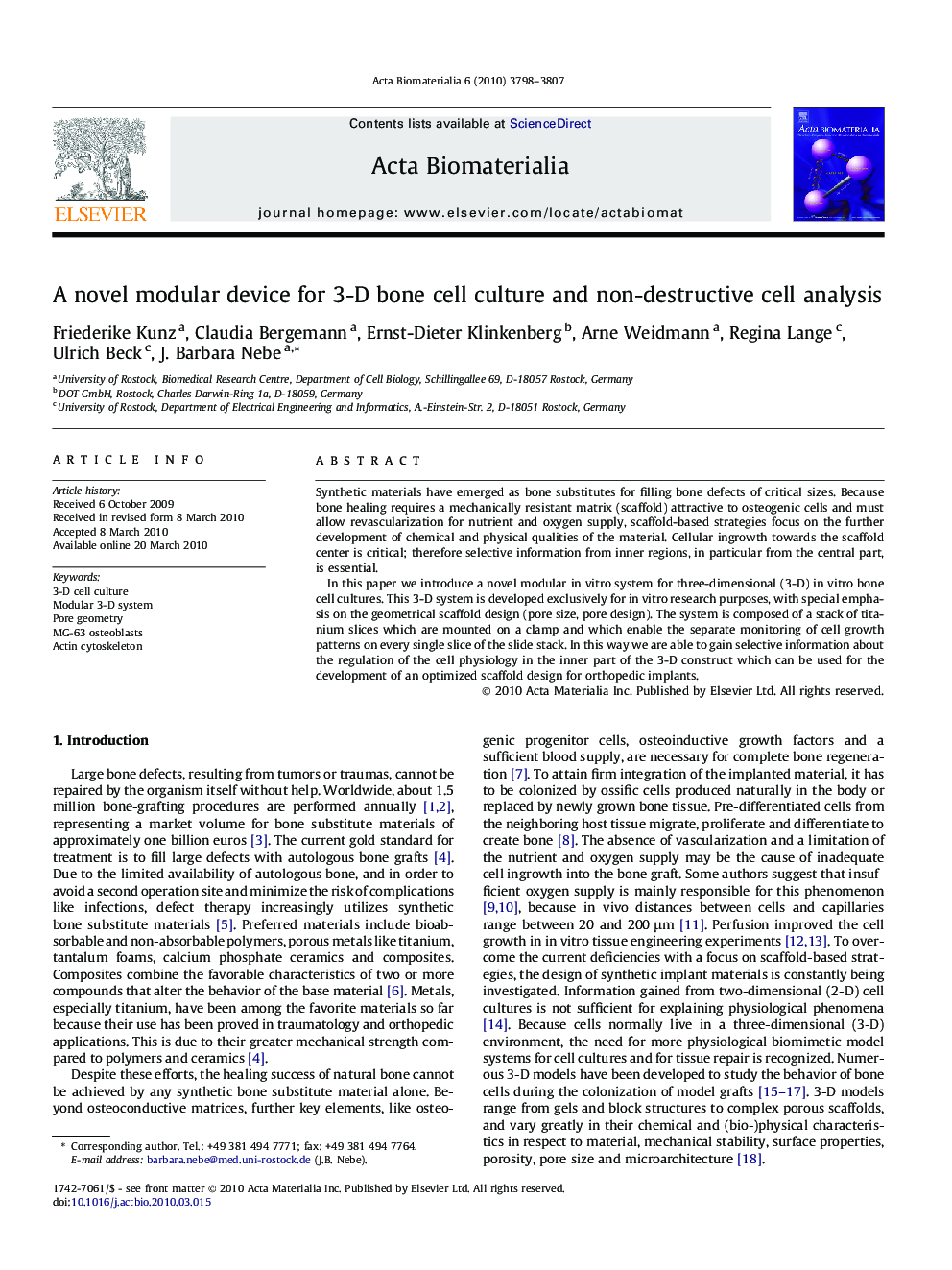| Article ID | Journal | Published Year | Pages | File Type |
|---|---|---|---|---|
| 2177 | Acta Biomaterialia | 2010 | 10 Pages |
Synthetic materials have emerged as bone substitutes for filling bone defects of critical sizes. Because bone healing requires a mechanically resistant matrix (scaffold) attractive to osteogenic cells and must allow revascularization for nutrient and oxygen supply, scaffold-based strategies focus on the further development of chemical and physical qualities of the material. Cellular ingrowth towards the scaffold center is critical; therefore selective information from inner regions, in particular from the central part, is essential.In this paper we introduce a novel modular in vitro system for three-dimensional (3-D) in vitro bone cell cultures. This 3-D system is developed exclusively for in vitro research purposes, with special emphasis on the geometrical scaffold design (pore size, pore design). The system is composed of a stack of titanium slices which are mounted on a clamp and which enable the separate monitoring of cell growth patterns on every single slice of the slide stack. In this way we are able to gain selective information about the regulation of the cell physiology in the inner part of the 3-D construct which can be used for the development of an optimized scaffold design for orthopedic implants.
